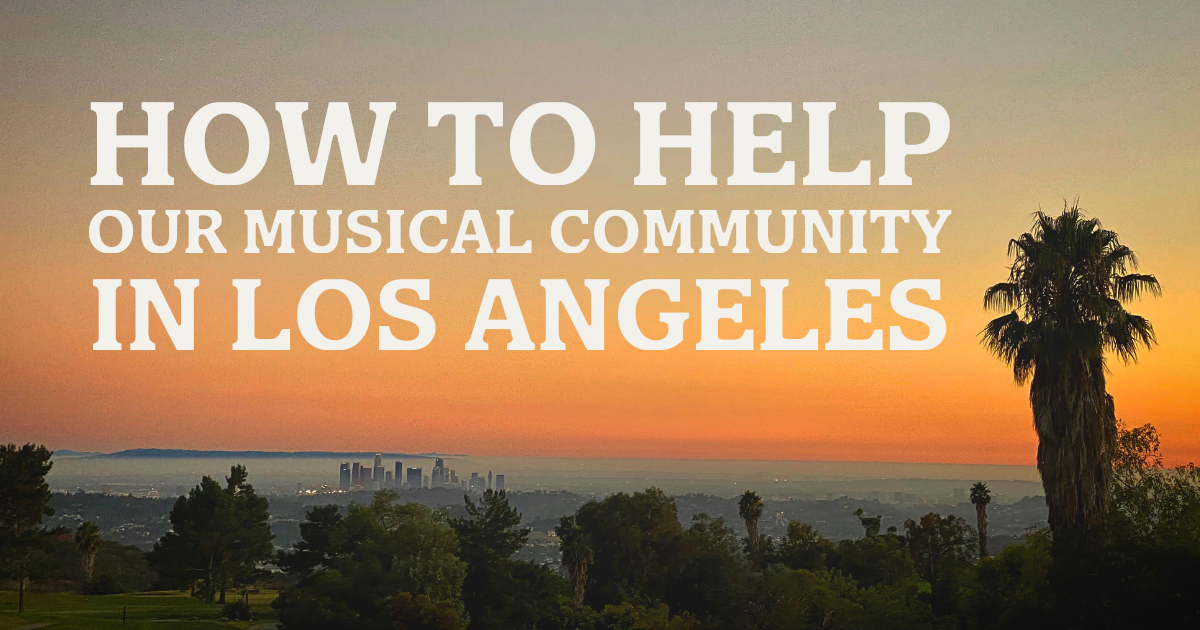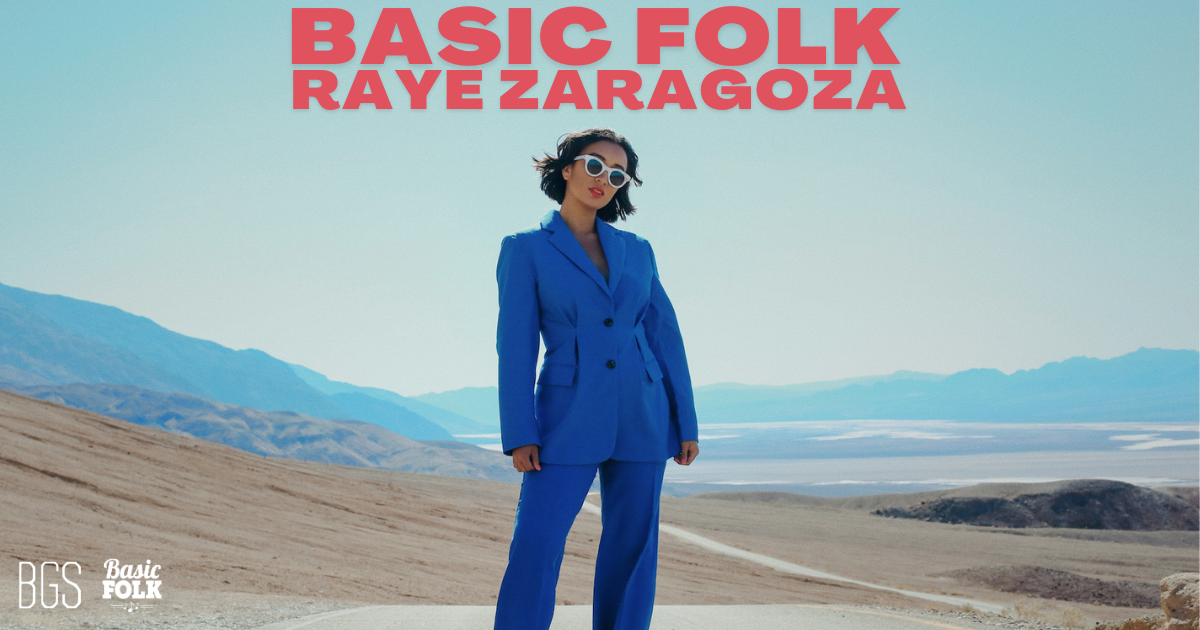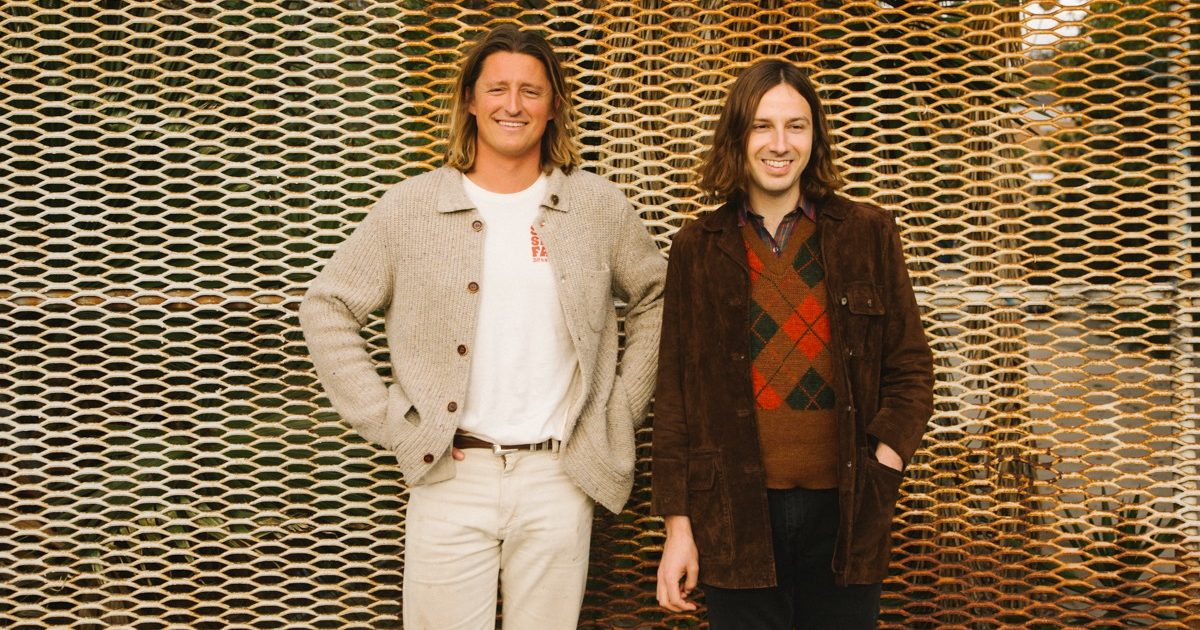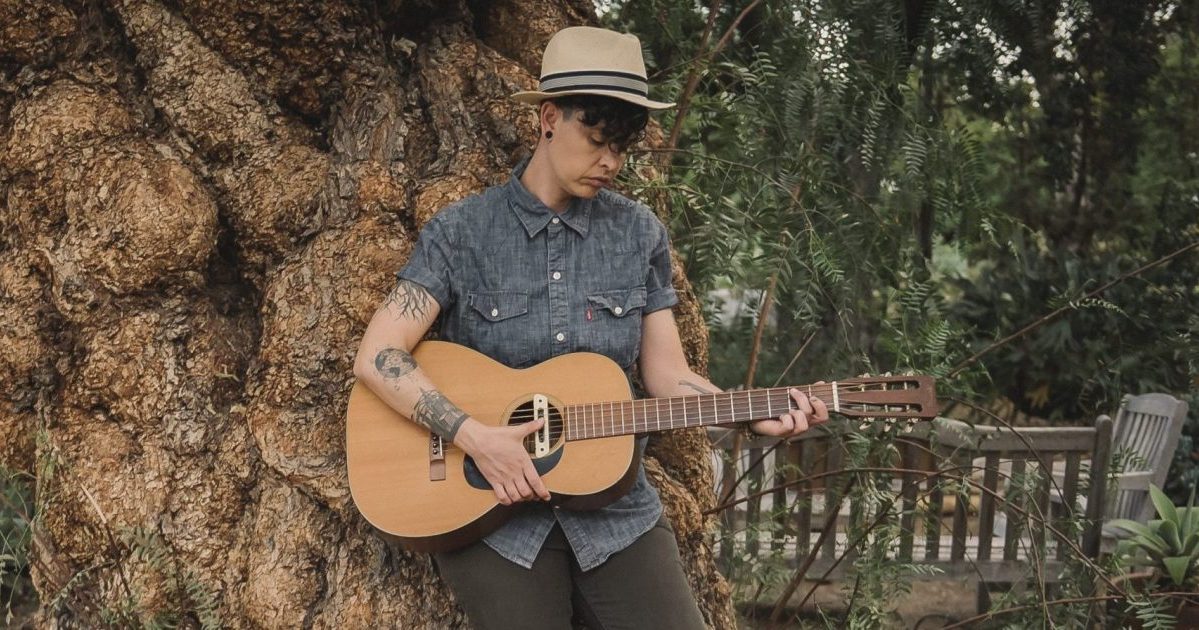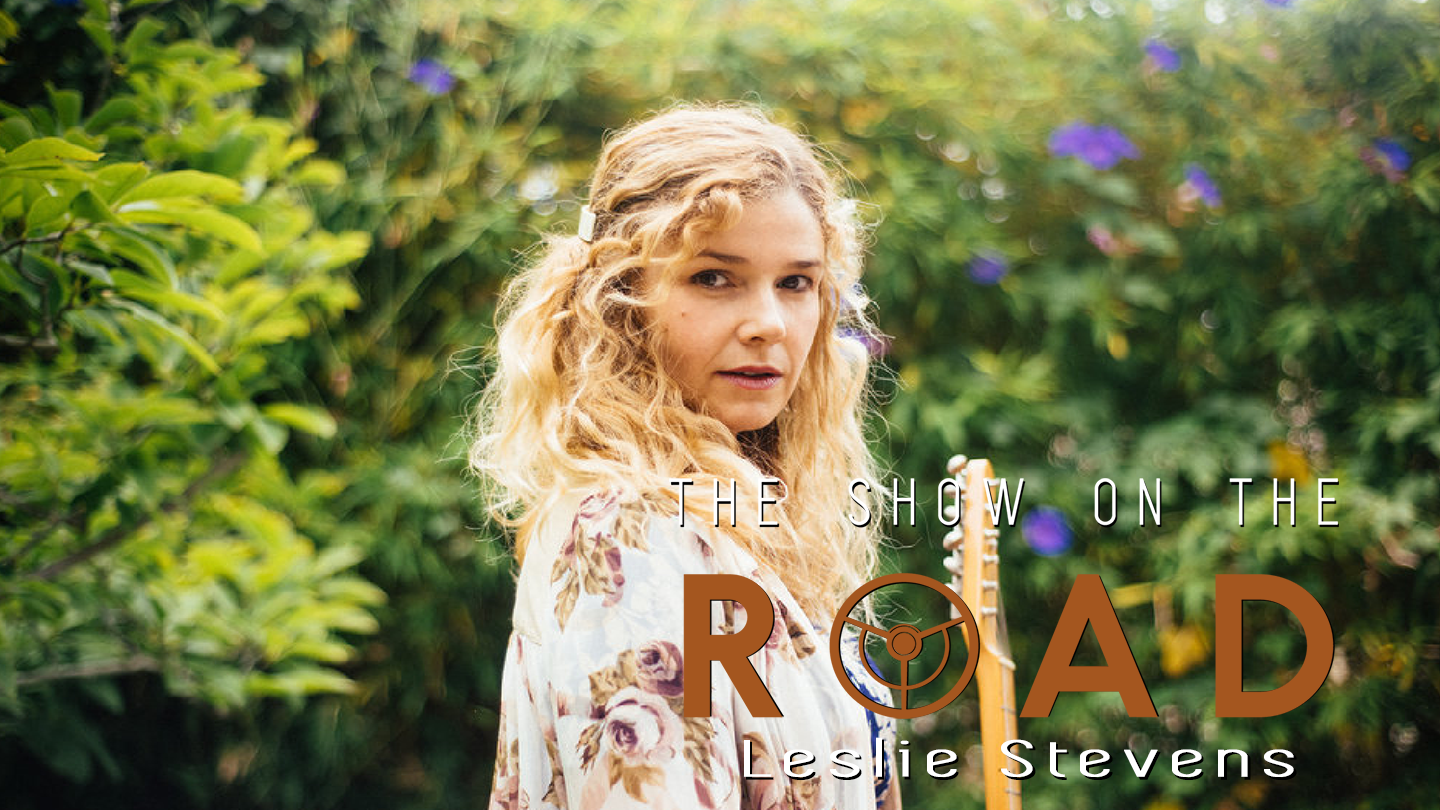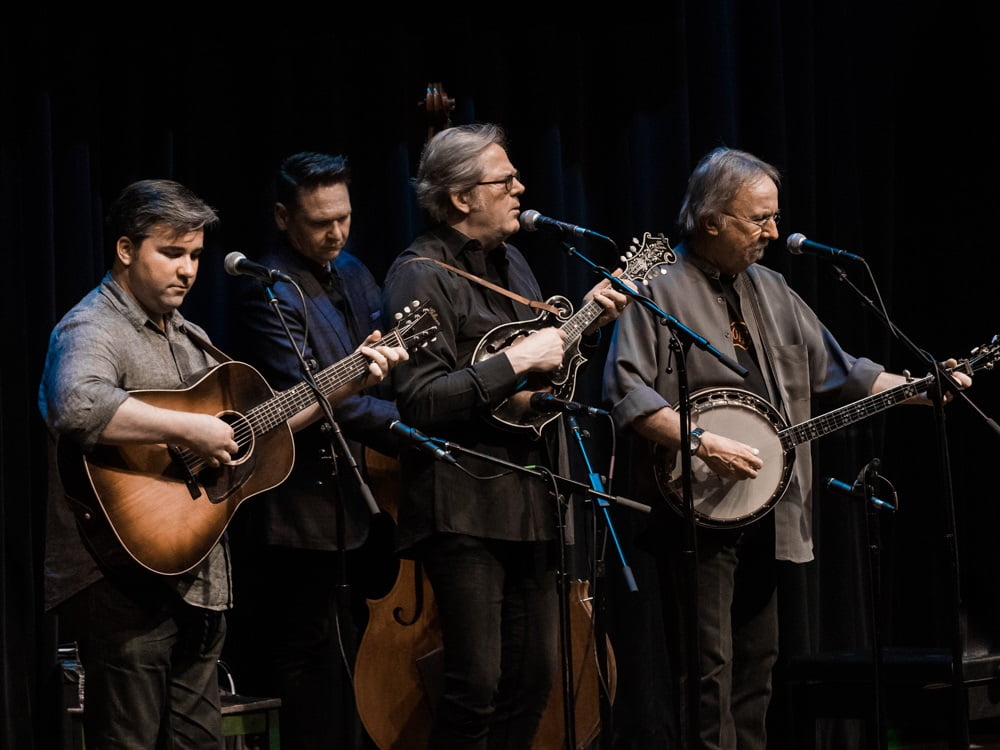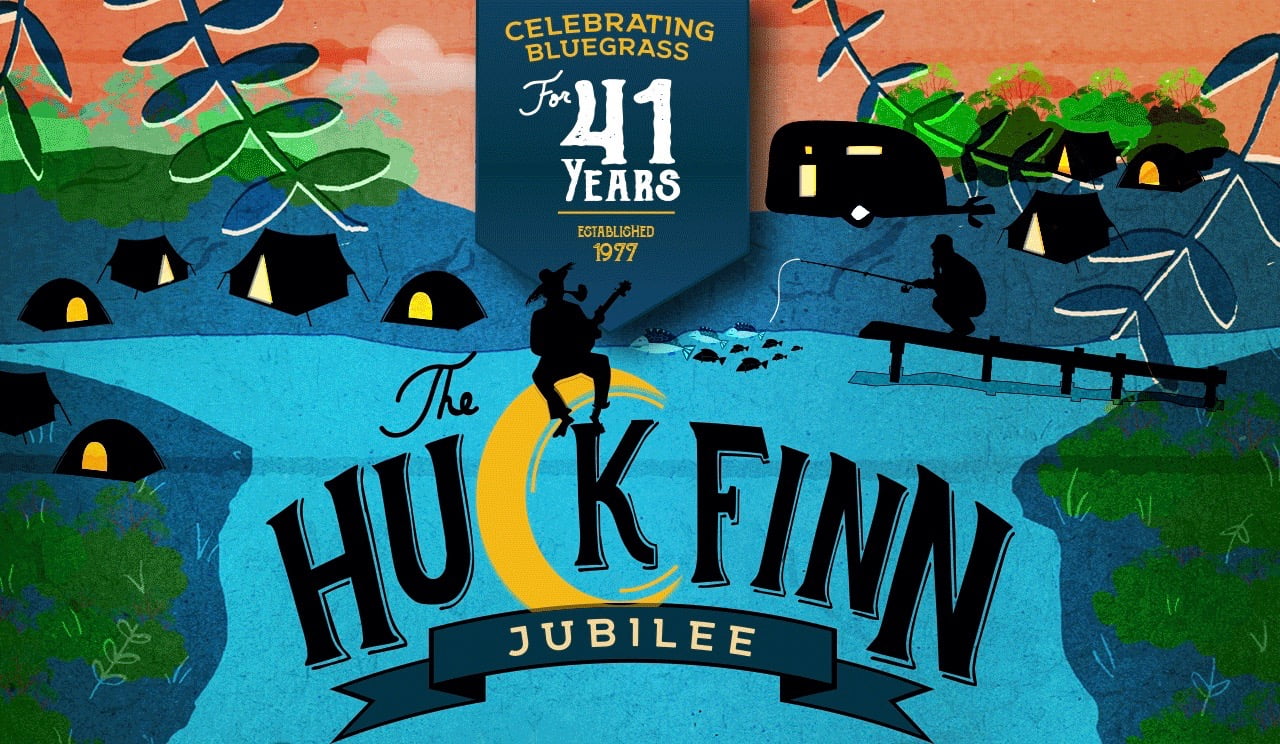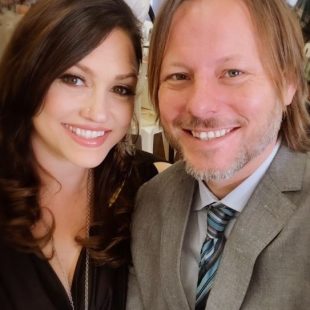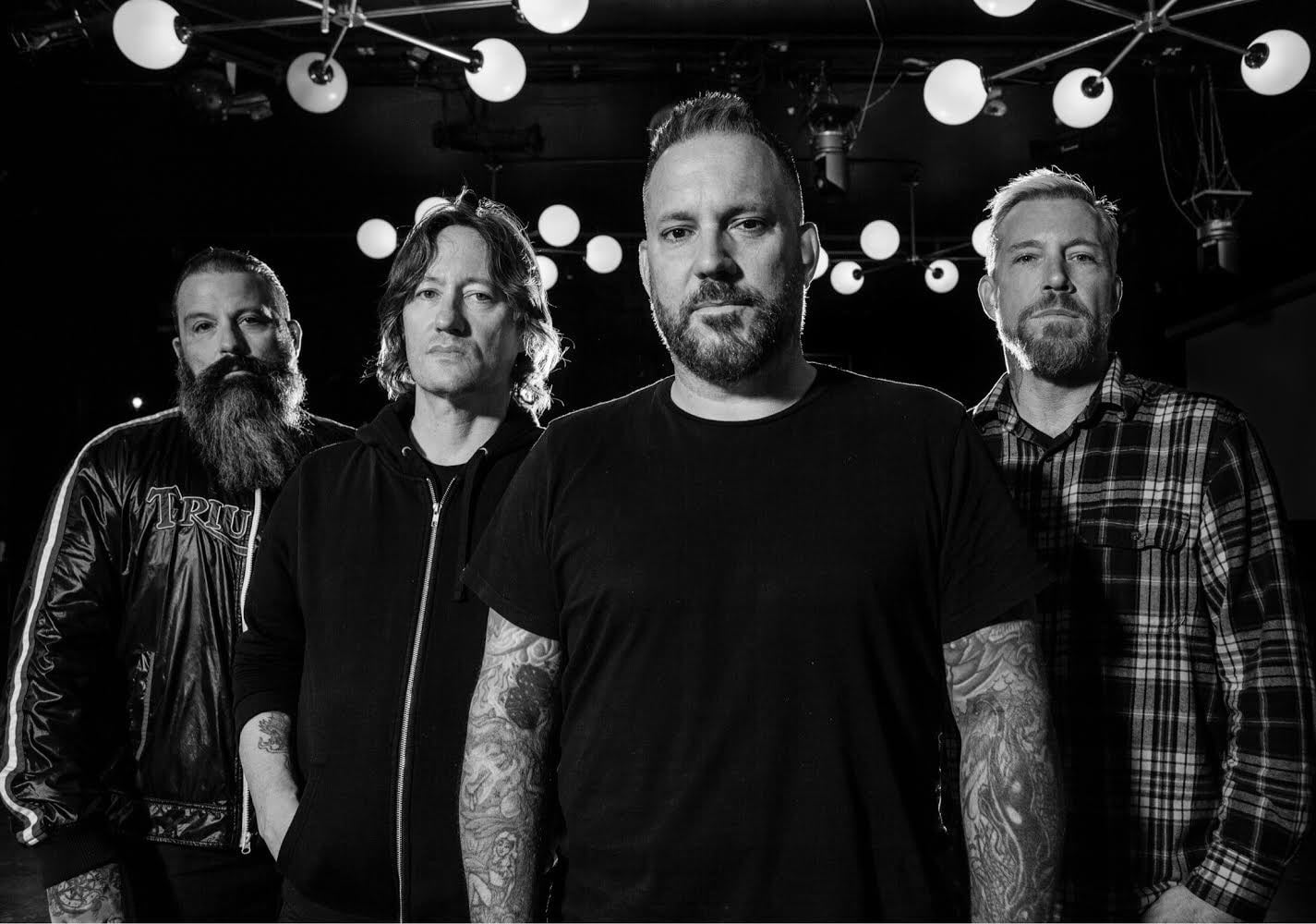Even before The Bluegrass Situation was its own entity, pre-dating the existence of this website, we’ve been proud to call Los Angeles home. From our co-founder Ed Helms’ original shows at Largo, or our first, homespun blog, Bluegrass LA, or our debut festival, the LA Bluegrass Situation, to today – boosting and presenting shows across Los Angeles County, building our new variety show, the Good Country Goodtime, and beyond, staying connected with the myriad of folks who make this place so special and vital – Los Angeles has been the perfect cradle for growing our worldwide roots music community.
Last week, we watched anxiously with the rest of the world as an rare wind event in Southern California turned into one of the most devastating series of wildfires in the nation’s history. Many of these fires are still burning, causing the destruction of thousands of homes, structures, and businesses and torching countless acres, so many precious landmarks, and irreplaceable memories. While we are incredibly grateful our team members who are based in Los Angeles are safe and sound, we’re acutely aware that so many of our neighbors, loved ones, and community members have not been so lucky.
We spoke to musician, singer-songwriter, and Mipso member Jacob Sharp – who recently moved to Altadena – about his own experiences over the last week, as his and his partner Cate’s neighborhood burned down around their home.
“I’m from a tiny town the western North Carolina foothills,” Sharp explains via email, amidst phone calls with FEMA and filing insurance claims. “I’m obsessed with cities with expansive music communities only rivaled by their even more expansive food scenes. I couldn’t believe it when I found out there are tiny towns in the foothills of the San Gabriel mountains on the edge of America’s most-difficult-to-navigate city where the true wildness of nature meets the beauty of urban chaos. Altadena felt like the best kept secret in California.
“We moved out to the hills a few months ago inspired by the current creative community that calls it home, by the insane music and food hangs that casually happen here on a daily basis because of it, by its historically diverse intermingling of racial worlds (there are more historic Black homeowners in Altadena than basically anywhere else in LA), and by the ease with which you can fade from the urban landscape into some of the best hiking in Southern California. (We have friends who see a bear in their yard literally every day).”
View this post on Instagram
“It was everything I’d ever wanted in a community,” Sharp continues. “I’d drive back from other neighborhoods and feel my shoulders relax as the mountains came into view. Today I drove back to our still-standing but currently-unlivable home crying, seeing those same mountains now devoid of their greenery and smoldering in the hazy morning light and replaying the sequence of events that altered our little world forever.
“We could see the Eaton fire from our backyard well before the emergency notifications came rolling in. We grabbed a go-bag with a headlamp, change of clothes, toiletries, all my instruments, some comfort items for the pup, and we rolled down the hill towards safety. We spent the night in the downtown Pasadena Hilton, where we were cruelly upgraded to a ‘mountain view’ room perfectly situated for watching our neighborhood burn to the ground overnight.
“My partner Cate is a therapist. Between her community of therapists and mine of musicians we have only two friends out of 16 who live in the neighborhood that still have a home. And, we have our health. We are so, so lucky. But with smoke damage making the house currently unlivable and the National Guard standing watch on every cross street starting half a block from us, we’re realizing that whether your house is standing or not, we all have one loss in common: our beautiful community.
“We had space in our car as we evacuated, but no desire to stick around and load more,” Sharp describes leaving behind so many of their earthly possessions. “It was clarifying how easy it was to say goodbye to our physical things. They’re all replaceable.”
“Altadena was such a magic community we delayed our move back to the East Coast by a few years so we could have a kid here. We knew our neighbors, saw friends on every walk, and if you forgot your wallet while picking up coffee you could always pay them next time, because they knew you and knew you’d be back. It was that type of place. After traveling the world on tour the past 13 years wondering at every stop along the way, ‘Could I call this place home?’ I’m realizing what’s irreplaceable is having finally found that place. We’ll find our magic again, but it’s going to be a long road. There are so, so many people who could use your help if you have resources to give – below you can find some I’m giving to.”
Los Angeles is a city of makers. Of creators and dreamers, of actors, singers, writers, and poets. So many of those directly impacted by the fearsome power of these fires have been folks in our immediate roots music circles. From Altadena and Pasadena to Pacific Palisades and Malibu, this disaster has not discriminated. Whether well-known and well-loved superstars or pickers we know from the neighborhood jam, publicists and publishers and agents and managers alike; the flames burned through homes, livelihoods, histories, and futures with zero regard for name or notoriety.
Luckily, that same collective of creators and makers are a vibrant and robust community – and just as we watched the fires destroy, we’re watching the people of Los Angeles rebuild in real time. There’s much to be done and there are seemingly endless needs to meet, but solidarity, mutual aid, and togetherness are not in short supply.
“It’s hard to put into words what I and so many other Angelenos are feeling right now,” BGS executive director Amy Reitnouer Jacobs shares. “It waffles between shock, anxiety, despair, and exhaustion as we watch our friends lose everything and our city burn. But amidst those feelings of grief, there is also an immense welling of hope. People are showing up for each other in unprecedented ways.”
That’s what it’s all about. As the climate crisis worsens and we re-enter an exceedingly unpredictable political reality, this kind of community action will become more and more vital. We’ve seen this is true over the past decade, through periods of racial reckonings, police violence, unrest, and growing political activism. Community-centered collective action is what will get us through. In bluegrass, in roots music, and beyond.
“I have never been so proud of this place and have never loved this city as much as I do right now,” Reitnouer Jacobs continues. “Los Angeles will always be home for me, for BGS, and for our amazing musical community.”
Below, we’ve collected a few resources from our artistic communities in Los Angeles and from mutual aid and community organizations working on the ground in southern California. If you’re able, we encourage you to donate, to volunteer, to show up however you can and whenever you can for our friends and fellow roots music lovers who have had their lives permanently altered by these wildfires.
All we have is each other, but when we support and care for each other – no matter what – that fact is always enough.
Support the Music Community
Local on-the-ground organizers have compiled THIS LIST of fundraising pages, resources, and urgent needs for musicians, instrumentalists, producers, and artists in the Los Angeles area. As of this writing, it has raised more than $6,000,000 across its various fundraisers and donation pages. Hundreds of families and individuals have been affected and are listed in the spreadsheet. If you’re looking for a way to directly support, this is a great collection of options.
Additionally, you can find a directory of fundraising pages for folks impacted by the Eaton Fire here. Plus, you can find a directory of Black families fundraising in the wake of the fires here.
Need support? Each of these directories includes instructions for submitting your own fundraiser, if applicable.
Giving support? Find countless fundraisers and offer direct support here, here, and here.
LA Times Compiles Resources
View this post on Instagram
The LA Times has put together a lengthy and exhaustive list of local organizations working on fire relief. From dog and pet rescue orgs to the American Red Cross to the California Fire Foundation. There are plenty of options and plenty of missions to support.
Guitar Center Foundation – Grants for LA Fires
View this post on Instagram
The Guitar Center Foundation has announced that they will accept applications from musicians to replace gear and instruments lost to the fire:
“Have you lost instruments and gear?” The foundation asks via social media. “If you’ve been impacted by this week’s fires, please visit our website for information and to request instrument replacement assistance. The Guitar Center Music Foundation is committed to supporting our music community in times of need.”
Those impacted by the disaster will be able to apply for grants of replacement instruments and gear until February 28, 2025.
Need support? Get more info and apply for replacement gear here.
Giving support? Donate to fund these grants and the foundation here.
Mutual Aid LA
View this post on Instagram
Mutual Aid LA has been collating and disseminating shelters, resources, and relief programs for folks actively in crisis and for folks looking for a way to give and help. You can find their spreadsheet of resources here, but you can also find more information and learn how to participate in mutual aid on their website.
Need support? Find resources here.
Giving support? Learn more here and donate here.
MusiCares
View this post on Instagram
MusiCares has long been an indispensable program of the Recording Academy with a mission of supporting music industry professionals in crisis or in periods of hardship. They’ve already begun dispensing emergency funds to music industry folks in need, as well as collecting donations specifically to support those impacted by the fires. You can donate to support MusiCares here. You can find ways to get help from MusiCares here.
Need support? Apply for emergency aid here.
Giving support? Donate to help fund fire relief MusiCares grants here.
Sweet Relief Musicians Fund
View this post on Instagram
Sweet Relief Musicians Fund is a non-profit founded in the ’90s that provides financial assistance to musicians and industry professionals who are struggling to make ends meet. They’ve already begun accepting donations and applications following the LA fires.
Need support? Submit your application here.
Giving support? Donate to Sweet Relief here.
Entertainment Community Fund
View this post on Instagram
Geared more towards actors, performers, and film industry and entertainment workers the Entertainment Community Fund (formerly The Actors Fund) has compiled a list of resources and organizations working on fire relief here. Entertainment professionals impacted by the wildfires can apply now for financial assistance and through the ECF can already access a variety of programs and aid.
Need support? Apply here.
Giving support? Donate here.
Photos by Amy Reitnouer Jacobs.
